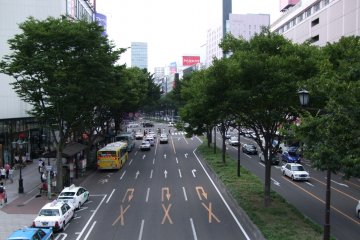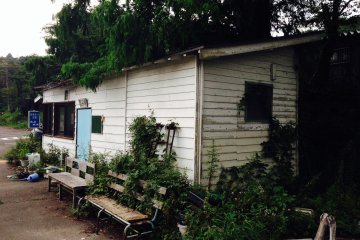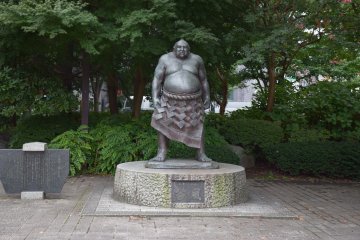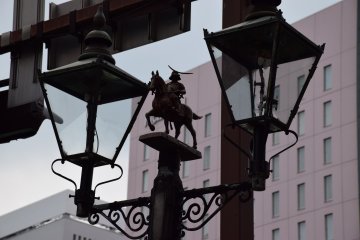Sendai city is now known as “Morino-miyako” or the “Tree-clad City” but has not necessarily always been like the Sendai we see today. At present you may appreciate the relatively clean and wide elm-covered boulevards with pedestrian walkways. In addition , the air quality is definitively one of the best of all the cities in East Asia because of the ozone generated by these trees and a constant breeze both from sea and mountains despite the recent unfortunate incidence of Fukushima Daiichi. Therefore, you could hardly imagine the stagnant air problems occurring 70 years ago inside the labyrinth of the once crammed and narrow alleys. On July 10th, 1945, 123 B29 bombers, under the command of the infamously Curtis Emerson LeMay, indiscriminately carpet-bombed with incendiary apparatuses to annihilate nearly a quarter of the city. Practically all the downtown area and 2,755 members of the civilian population of Sendai City literally burned or suffocated in an agonizing demise. Just a month later in August 15th,1945, General Douglas MacArthur arrived in Japan.
In September 1945, Camp Schimmelpfennig, the largest base of GHQ north of Tokyo, was set up in Nigatake, Sendai. You can still see the base from the outside, currently under control of Japan's Self-Defense Force, less than a 10-minute train ride from Sendai Station. Many of the officers or GI at that time resided in the Kawauchi Area of the city, which is scheduled to be connected by subway via Sendai Station from 2015. The area is now the Kawauchi Campus of Tohoku University and many of these buildings, hastily built by 2X4 architecture, were subsequently demolished by expansion of the University campus. However, because they were so well constructed, some of them are still being used by the students and faculty.. The hastily built structures created because of the shortage of materials by US military engineers even survived The Great Earthquake of 3/11/2011.
The most imminent recovery plan after the ferocious bombing by LeMay in Sendai described above, was to rebuild the city. The staff of GHQ stationed in Camp Schimmelpfennig were a mixture of engineers, architects and others prior to the draft. Others came with the reminiscent scent of idealistic 'New Dealers'. All played pivotal and cardinal roles in the city planning and revitalization of Sendai City, which you can easily see today. In particular, three major boulevards, Johzenji Dori, Hirose Dori and Aoba Dori run east to west through downtown. They were designed and paved primarily by those idealistic and admirable US military members and Americans at that time. You may recall Otomodachi Sakusen or Operation Tomodachi (Friend) after 3/11/2011. Although not following any natural disasters or calamities but their own non discriminatory B 29 bombing, the first Operation Tomodachi could be said to have happened after WWII. Every time you stroll one of the boulevards, you may be able recall the Americans who rebuilt a new downtown in a relatively small city center, preparing Sendai for the motor age while protecting a sense of harmony with nature.














